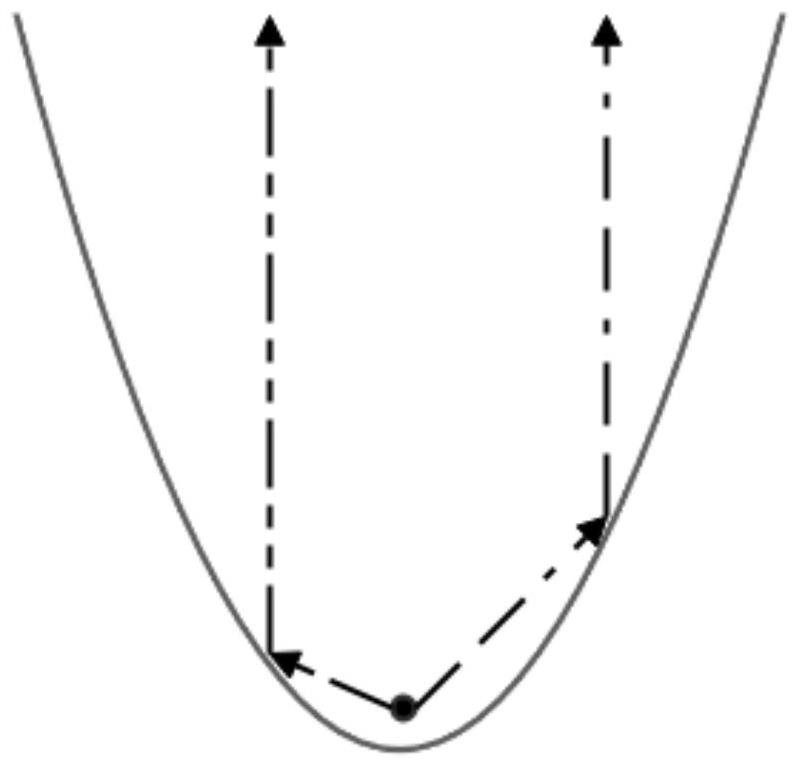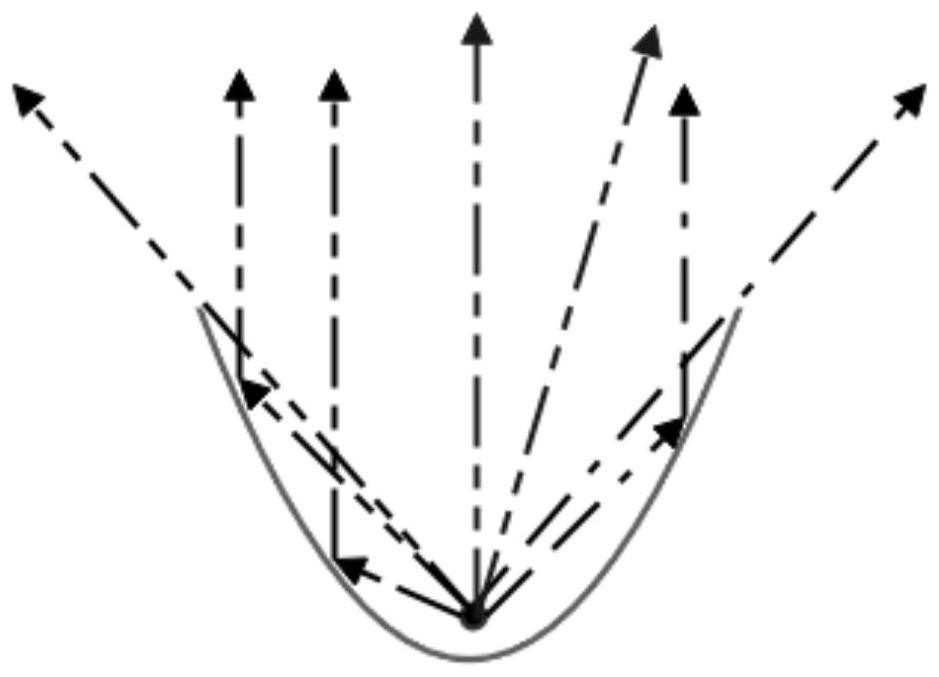Method for generating any-angle cone light column with distinguishing characteristic
An arbitrary angle, cone technology, applied in optics, optical components, image analysis, etc., can solve the problem of reduced visual detection distance, etc., to reduce the difficulty of visual processing, avoid interference, and avoid the reduction of visual detection distance Effect
- Summary
- Abstract
- Description
- Claims
- Application Information
AI Technical Summary
Problems solved by technology
Method used
Image
Examples
Embodiment 1
[0065] Such as Figure 7 As shown, this embodiment constructs a parabola with a width of 1 unit and a height of 1 unit, and then rotates the obtained parabola by 180 degrees to obtain a conical beam of light at a certain angle. The angle β of the conical light column calculated in this embodiment.
[0066] According to formula (1), the parabolic function with width w and height h is Substituting w as 1 and h as 1, the function of the parabola is obtained: y=4x 2
[0067] The focus of this parabola is: According to formula (2), the relationship between w, h and β is:
[0068]
[0069] Substitute:
[0070]
[0071]
Embodiment 2
[0073] In this embodiment, on the basis of Embodiment 1, the angle value of β is increased, assuming that β is increased to 90 degrees. In this embodiment, the value of h is calculated on the premise that w is fixed.
[0074] In order to increase the value of β, and also for the convenience of calculation, this embodiment fixes the width w of the parabola as 1 unit, and increases the value of β by changing the value of the height h of the parabola. According to formula (2), the relationship between w, h and β is:
[0075]
[0076] Substituting β to 90 and w to 1 into the above formula, we get:
[0077] After derivation and calculation, we get:
[0078] That is:
[0079] get:
[0080] Therefore, h=0.6. That is to say, when the width w remains unchanged and is still 1 unit, in order to obtain a conical beam with a β angle of 90 degrees, the height h of the parabola needs to be reduced.
Embodiment 3
[0082] In this embodiment, on the basis of Embodiment 1, by adding a light-proof and non-reflective baffle 1 to reduce β, assuming that the reduction β is 30 degrees. This embodiment calculates the value of L.
[0083] In order to reduce β to 30 degrees, according to the relationship between w, h, β and L in formula (3):
[0084]
[0085] Substituting w as 1, h as 1, and β as 30 into the above formula, we get:
[0086]
[0087]
[0088] After derivation and calculation, it is obtained: L=0.25. That is to say, when the width w and the height h are 1 unit, in order to obtain a conical light column with a β angle of 30 degrees, the length of the added opaque and non-reflective baffle 1 is 0.25 units, such as Figure 8 shown.
PUM
 Login to View More
Login to View More Abstract
Description
Claims
Application Information
 Login to View More
Login to View More - R&D
- Intellectual Property
- Life Sciences
- Materials
- Tech Scout
- Unparalleled Data Quality
- Higher Quality Content
- 60% Fewer Hallucinations
Browse by: Latest US Patents, China's latest patents, Technical Efficacy Thesaurus, Application Domain, Technology Topic, Popular Technical Reports.
© 2025 PatSnap. All rights reserved.Legal|Privacy policy|Modern Slavery Act Transparency Statement|Sitemap|About US| Contact US: help@patsnap.com



